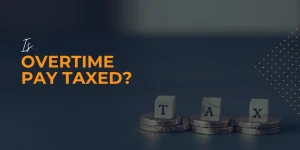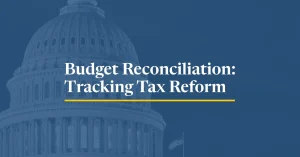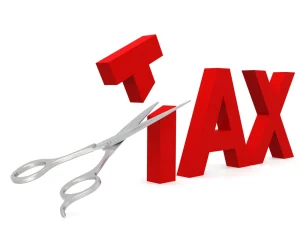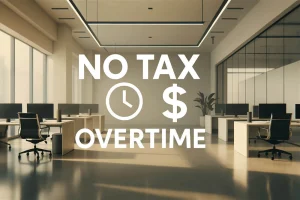When the no tax on overtime bill passed, it marked a big shift for American workers. Thanks to the Tax Relief Act of 2025, signed during Donald Trump’s leadership, the new rule removes income tax on overtime wages for tax years 2025 through 2028. This means if you work overtime, your extra pay is now covered under a tax exemption, putting more money in your pocket.
This idea, part of Trump’s no tax on overtime plan, was designed to reward hard work without the stress of losing a portion to taxes. The no tax on overtime act of 2025 brings real benefits, especially for blue-collar and hourly workers. From my own experience in payroll management, this change simplifies things and boosts take-home pay an outcome many families have waited for under the promises of the no tax on overtime policy.
Understanding the Tax on Overtime and Tips
Considering that when I had just begun to earn higher paying overtime and getting tips, I soon learned that what amounted to a big portion of my gross income was going to the federal tax coffers. Many workers feel the same pressure to adjust their work hours to maximize their overtime wages.
That’s why the recent push for no tax on tips and overtime has brought so much relief. This movement, especially after the no tax on tips and overtime bill passed, means that wage income earned beyond regular hours could finally come without extra tax stress. To learn more insights, you can visit Smart Press Hub.
With this change, there’s also growing awareness around tax on tips.Tips exemption benefit will be particularly enjoyed by the people working in the service sector who work hard to get the money they earn fairly treated. In the case you are putting in overtime yourself or are getting tips from customers.
It is good to keep a record of your earnings and know where you are now situated due to changes in the new laws related to the deduction for overtime. With no tax on tips and overtime, many of us can now plan our budgets with more clarity and less worry, especially as we prepare for the budget reconciliation bill.
How Overtime Pay is Taxed

Many workers ask, how is overtime taxed or do you get taxed on overtime hours, especially when their paycheck seems smaller than expected. The truth is, overtime pay is added to your base wages, which increases your total taxable income.
Learn More
This can push part of your earnings into a higher marginal tax rate, making it feel like you’re losing more money to tax deductions from overtime compensation, which should ideally be subject to federal income tax. I remember the first time I received an overtime bonus, I was excited until I saw the tax cut. It wasn’t that the bonus was taxed more, but because it bumped my total income higher, which meant more tax was applied at the upper rate bracket.
The Financial Impact of Exempting Tips from Income Tax
Many workers in hospitality rely on tips, but the idea of no tax on tips is gaining attention, especially alongside the Trump no tax on tips and overtime proposal. If tips exemption becomes a reality, employees could keep more of their gross income, boosting morale and income.
From my experience managing payroll, calculating income tax on daily tips creates confusion and sometimes frustration among staff who are required to report overtime and deal with inconsistent earnings. Removing this tax burden could simplify things for both employers and workers. However, questions remain about how federal income taxes would be adjusted and whether it would apply across all industries equally.
Impact of Overtime on Federal Income Tax
-
Overtime pay is currently taxed as part of total income, potentially pushing workers into higher federal income tax brackets.
-
This increased withholding affects regular wages, even though workers are just working more hours.
-
A personal example shows how freelance + full-time overtime led to a higher tax bill due to required income reporting.
-
The “No Tax on Overtime” proposal is gaining traction as a potential tax relief measure.
-
If implemented, it could simplify payroll, change tax reporting, and help middle-income earners retain more income.
-
There might be an income limit for eligibility to prevent high earners from benefiting unfairly.
The Tax Relief Act of 2025
The Tax Relief Act of 2025 is a big change for American workers, especially concerning their hours worked and overtime compensation. Backed by Donald Trump, this new law supports the trump no tax on overtime policy, which means workers no longer have to pay income tax on the extra hours they work.
Many people who work long shifts feel this is fair, especially in today’s economy where every dollar counts, particularly in terms of their overtime wages. I remember when a friend of mine worked double shifts and lost a big part of his pay to taxes — this bill on no tax on overtime finally brings some balance to that.
This change updates the tax code and helps people who rely on overtime to pay their bills, aligning with the goals of the budget reconciliation bill. The Tax Relief Act of 2025 is not just a rule change, it’s a signal that hard work should be rewarded, not taxed more.
The Purpose Behind the Act
The no tax on overtime meaning is simple—it allows workers to keep all the money they earn from extra hours without paying federal income tax on it. This idea gained attention through Trump’s no tax on overtime push and was later shaped into the One Big Beautiful Bill Act, officially known as the House version of H.R. 1.I recall reading the no tax on overtime update in one of the payroll policy meetings and it caused quite some excitement on the part of the workers who have to depend on overtime to put ends together.
However, this act did not only end up giving more cash to the pockets of workers, but also included a move to revise the current taxations to favor working families who are filing jointly. Lawmakers were however forced to take into consideration the federal deficit as tax-cutting does have a significant effect on national revenues.
From what I’ve followed, this bill tried to balance wage relief while ensuring responsible federal spending—a bold but challenging task in tax reform.
Key Provisions of the Tax Relief Act
When the no tax on overtime bill became law through H.R. Many workers felt hopeful about the extra income they could keep from tips and overtime pay. One of the key provisions of no tax on overtime is that overtime pay is now excluded from federal income tax, which means more money goes into your pocket and reduces the burden of social security and medicare taxes.
According to the Joint Committee on Taxation, this change is expected to cost around $124 billion, but it offers direct relief to millions of hardworking Americans. Another major point is the higher standard deduction, which simplifies tax filing and offers greater savings for low and middle-income earners. With the no tax on overtime bill passed in 2025, these benefits became real, helping workers like me feel more financially stable each pay period through increased overtime compensation.
The Role of the Reconciliation Bill in Making It Happen

The reconciliation bill became a turning point when the U.S. House of Representatives pushed forward a megabill that focused on real tax relief for working people. This included the house republican spending bill no tax on overtime, which made sure that workers would keep more of what they earn during extra hours.
What makes this even more important is how the reconciliation bill no tax on overtime directly applies to tax years 2025–2028, giving it long-term value. From my experience watching similar legislative moves, once such a detailed megabill is in play, it often sets the tone for bigger economic shifts. This wasn’t just a political tactic—it was a strategic use of the reconciliation process to secure lasting change for hardworking Americans.
Tracking the 2025 Trump Tax Cuts
When Donald Trump introduced Trump’s no tax on overtime bill, it caught national attention, especially among those affected by the overtime pay requirements. But to fully understand its roots, we must look at the history of the Tax Cuts and Jobs Act (TCJA).
This policy began reshaping federal tax rules back in 2017, and now, as we are tracking trump’s tax cuts in 2025, the scale of its expansion is massive—estimated between $6.1 trillion to $6.8 trillion.
These figures reflect how deeply the plan is set to impact working Americans. For me, watching how the original TCJA evolved into bold efforts like trump tax cuts for overtime shows a clear shift—toward putting more cash directly into workers’ hands, especially for those clocking in extra hours.
Timeline of Events Leading to the Act
The timeline on no tax on overtime began taking shape when discussions around federal income tax reform intensified in the years 2025 through 2028, particularly in relation to pay for hours worked. Legislators insisted on the need to lighten the tax load of the employees who work overtime, ensuring fair labor standards act compliance.
The result of this was the emergence of H.R. focused on adjusting the tax return process for overtime wages. 1, which suggested the elimination of overtime as part of the taxable pay. The bill gained fast momentum following support from labor groups and middle-income workers, as they rallied for better overtime wages and a fair rate of pay for hours worked.
By mid-2025, after rounds of administrative checks and committee reviews, the bill passed and was signed into law. The no tax on overtime start date was set shortly after the President’s approval, with changes officially reflected in W-2 forms beginning the next tax season. So, for anyone wondering when did no tax on overtime start, it’s tied directly to the rollout tied to 2025’s fiscal policy updates.
Stakeholder Reactions and Impact on Workers
The news about no tax on overtime quickly caught attention, and the stakeholder reactions to the removal of income tax on overtime wages were mixed. I remember when Ben, a manager at ABC Inc., shared how the policy would ease financial stress for their hourly workers, especially those clocking in extra hours to make ends meet. Meanwhile, some salaried employees didn’t feel the same benefit, as their contracts didn’t include extra hourly pay.
Labor unions are now reviewing collective bargaining agreements to make sure all eligible employees can enjoy the gains. People are also asking, “has no tax on overtime passed?” Although the idea has widespread support, numerous people are waiting before they can start to celebrate the end of the battle over the house version of the bill. This would mean a big blow to the workers particularly to those who rely on overtime as a means to earn better monthly pay.
Future Implications for Tax Policies
The idea that the Trump bill passed no tax on overtime wages has already begun to reshape how experts view future tax policy in the United States, particularly in relation to the library of Congress reports. Removing taxes on extra work hours not only simplifies the tax code but also brings discussions around tax neutrality to the front, particularly regarding how overtime pay requirements are implemented.
With overtime earnings being treated differently, governments may need to revisit classification arrangements to make sure full-time and part-time work is taxed fairly. I’ve seen how workers adjust when incentives shift—this kind of behavioral shifting can change how people choose jobs, hours, and even industries. If Trump passes no tax on overtime becomes the norm, expect long-term changes in how tax rules are structured.
Long-Term UI System Effects of Exempting Overtime from Federal Income Tax
The no tax on overtime bill 2025 may bring some unexpected changes to the UI system over time, especially concerning W-2 reporting. Workers will keep more of their wages due to this tax exemption. So, it may seem like they earn more than they really do.
This can lower the benefits they get if they become unemployed, impacting their gross income during tough times. Federal income tax no longer reduces the reported earnings. That means the long-term UI effects no tax on overtime could be lower payouts or stricter eligibility in the future.
From what I’ve seen in past reforms, even well-meant tax changes like the no tax on overtime 2025 can slowly shift how support systems like unemployment insurance work, especially concerning overtime pay requirements.
Adapting UI Policy to Overtime Tax Cuts

The Trump no taxes on overtime plan has made us rethink UI policy. We need it to fit today’s workforce better. When overtime income is no longer taxed, workers might prefer extra hours over taking on new jobs. This change might impact labor elasticity, particularly regarding the house and senate discussions on overtime regulations.
It could make it tough for employers to foresee staffing needs. It may also challenge states in managing UI policy funds. The salary level test used to classify employees under the FLSA might need a refresh to better reflect current economic conditions.
Learn More
Many workers are now crossing earnings thresholds at a faster rate due to the changes in overtime wages. Policymakers need to reassess the reporting burden on employers, especially concerning tips and overtime pay. They must ensure that the new rules for UI overtime tax cut adjustments are clear.
No tax on overtime and changing labor patterns
Now that there are no taxes on overtime, many workers are eager to take extra hours. This change is shifting labor trends over time. My HR experience shows that this policy increases productivity. Employees feel more rewarded. In states like California, where no tax on overtime California measures are gaining attention, workers are rethinking how they balance time and income.
This change affects the labor market by increasing availability during high-demand periods. The Bureau of Labor Statistics has also started noticing new participation patterns. As tax policy adjusts, we may also see a change in labor elasticity, where workers respond more flexibly to shifts in pay due to better financial outcomes from overtime wages.
UI Fund Solvency in a Post ‘No Tax on Overtime’ Economy
In a world where there’s no tax on overtime, the stability of the UI fund is now a real worry. As overtime hours increase without extra income tax, payroll taxes tied to those earnings may no longer rise as expected. This change impacts how states fund their UI fund, especially in areas where state wage laws depend heavily on overtime contributions.
From my own experience in labor policy analysis, I’ve seen how updates in the tax code like the outcome of the no tax on overtime vote count can shift economic assumptions. If tax revenue shrinks while job benefits expand, we may see growing pressure on UI fund solvency across different states. This calls for a deeper look at how unemployment insurance will stay strong in a system that’s rapidly changing.

Impact on Federal vs. State UI Funding Structures
When no taxes on overtime bill became a focus, the pressure on both federal income tax and state ui funding models grew, prompting discussions in the house of representatives passed. In states like Alaska, Nevada, and Oregon, wage structures rely on high hourly pay and fewer working hours.
When taxes on overtime disappear, it disrupts revenue collection. This, in turn, harms funding for unemployment programs and the overall taxpayer base, affecting the adjusted gross income of many. From my experience working with local payroll compliance, I saw how businesses in California and Colorado struggled to align with both state minimum wage rules and the rate of pay for hours worked, including shifting tax contributions.
Learn More
While no tax on overtime states may help workers take more home, it leaves gaps in funding needed at both state and federal levels to keep benefits like unemployment support strong, especially for taxpayers.
UI Policy Design in a Tax-Exempt Overtime Economy
In an economy with no tax on overtime, designing a strong UI policy that includes exempting overtime pay is more complex. Since tax exempt overtime reduces the flow of traditional payroll taxes, it weakens the link between employer contributions and economic policy goals, particularly under the FLSA.
I’ve worked in public benefits research, focusing on the impact of tax deductions for overtime on low-income taxpayers, especially in relation to modified adjusted gross income. I’ve seen how UI design needs to change when tax exemptions impact revenue streams.
Without steady funding, states need stricter checks for income tax purposes. This ensures benefits go only to those who qualify based on their adjusted gross income and are filing jointly if applicable. Balancing fairness with functionality means understanding how UI policy design affects long-term unemployment.
Final Thoughts
The decision to eliminate taxes on overtime isn’t just a tax change; it also affects the regular rate of pay for many employees. It’s a bipartisan effort to motivate workers and boost economic growth. As someone who has followed wage policy shifts closely, I see how this can reshape work culture.
With no more income tax on overtime wages, employees may finally feel that extra hours worked truly pay off. The Tax Foundation’s analysis might change our view of overtime. It’s not just about work; it’s also about opportunity.
FAQs
Is there really going to be no tax on overtime?
Many are hopeful, but the policy isn’t confirmed yet and still needs official approval from the 119th Congress. Congress hasn’t passed a tax on overtime yet, but talks are picking up regarding overtime compensation and how it relates to the FLSA.
Do you get taxed on overtime hours?
Yes, you do get taxed on overtime wages for your income tax return. Overtime pay adds to your regular income, so it's taxed based on your total earnings. The way how overtime is taxed works is it can push your income into a higher bracket, reducing your take-home pay.
Did Congress pass no tax on overtime?
Many people are wondering if Congress passed the no tax on overtime. The vote results show it hasn't fully passed yet, leaving uncertainty for taxpayers. While parts of the no tax on overtime passed through early stages, it's not a final law at this time.
Is there really going to be no tax on overtime?
Many are hopeful, but the policy isn’t confirmed yet and still needs official approval from the 119th Congress. Congress hasn’t passed a tax on overtime yet, but talks are picking up regarding overtime compensation and how it relates to the FLSA.
Do you get taxed on overtime hours?
Yes, you do get taxed on overtime wages for your income tax return. Overtime pay adds to your regular income, so it's taxed based on your total earnings. The way how overtime is taxed works is it can push your income into a higher bracket, reducing your take-home pay.
Did Congress pass no tax on overtime?
Many people are wondering if Congress passed the no tax on overtime. The vote results show it hasn't fully passed yet, leaving uncertainty for taxpayers. While parts of the no tax on overtime passed through early stages, it's not a final law at this time.
